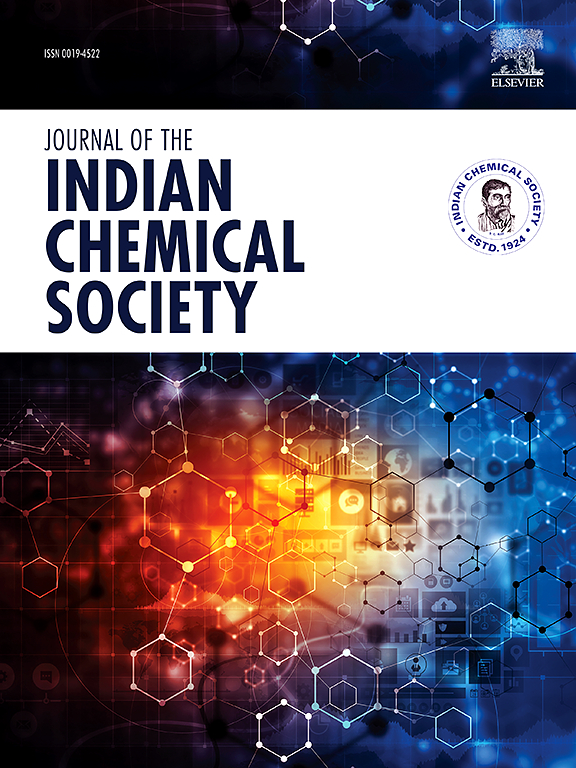番茄红素在催化转移硫化工艺中将天冬氨酸等氨基酸转化为天冬氨酸硫酰胺方面具有非凡的催化性能
IF 3.2
4区 化学
Q2 CHEMISTRY, MULTIDISCIPLINARY
引用次数: 0
摘要
本研究概述了一种简单的一步催化转移硫化方法,该方法可用于利用番茄红素合成天冬氨酸硫酰胺,该方法采用溶剂萃取法从新鲜番茄中提取。采用拉曼光谱、FESEM、TEM、EDS、FT-IR和粉末XRD等方法对天冬氨酸硫酰胺颗粒进行了表征。番茄红素是天冬氨酸在H2S气氛下硫化的催化剂。当番茄红素和H2S加热到100℃45 min时,番茄红素单独催化天冬氨酸转化为天冬氨酸硫酰胺的活性为38.5%,与H2S的催化活性为52.56%。此外,番茄红素-100在多种极性溶剂中稳定,对天冬氨酸的分解具有较高的催化效率,在水中形成天冬氨酸硫酰胺的选择性为89.21%。本文章由计算机程序翻译,如有差异,请以英文原文为准。
Extraordinary catalytic performance of lycopene in the conversion of amino acid like aspartic acid to aspartic thioamide using catalytic transfer sulfurization process
This study outlines a straightforward one-step catalytic transfer sulfurization method that can be utilized to synthesis aspartic thioamide with the help of lycopene, which is extracted from fresh tomatoes using a solvent extraction method. Aspartic thioamide particles are thoroughly characterized by Raman, FESEM, TEM, EDS, FT-IR and powder XRD spectroscopic analysis. The lycopene acted as a catalyst for sulfurization of aspartic acid in H2S atmosphere. When lycopene and H2S are heated to 100 °C for 45 min, lycopene alone exhibits 38.5 % catalytic activity in the conversion of aspartic acid to aspartic thioamide, and 52.56 % with H2S. Moreover, in a variety of polar solvents, lycopene-100 is stable and demonstrates high catalytic efficiency in the breakdown of aspartic acid, forming aspartic thioamide with 89.21 % selectivity in water.
求助全文
通过发布文献求助,成功后即可免费获取论文全文。
去求助
来源期刊
CiteScore
3.50
自引率
7.70%
发文量
492
审稿时长
3-8 weeks
期刊介绍:
The Journal of the Indian Chemical Society publishes original, fundamental, theorical, experimental research work of highest quality in all areas of chemistry, biochemistry, medicinal chemistry, electrochemistry, agrochemistry, chemical engineering and technology, food chemistry, environmental chemistry, etc.

 求助内容:
求助内容: 应助结果提醒方式:
应助结果提醒方式:


